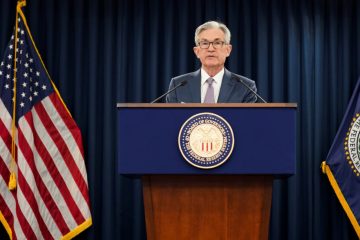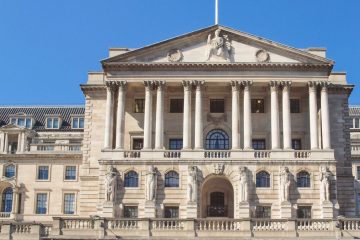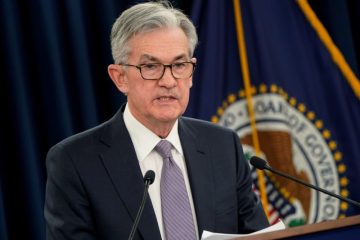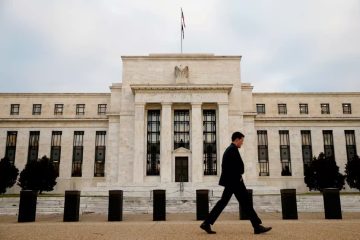Federal Reserve Officials Anticipate Three Cuts This Year
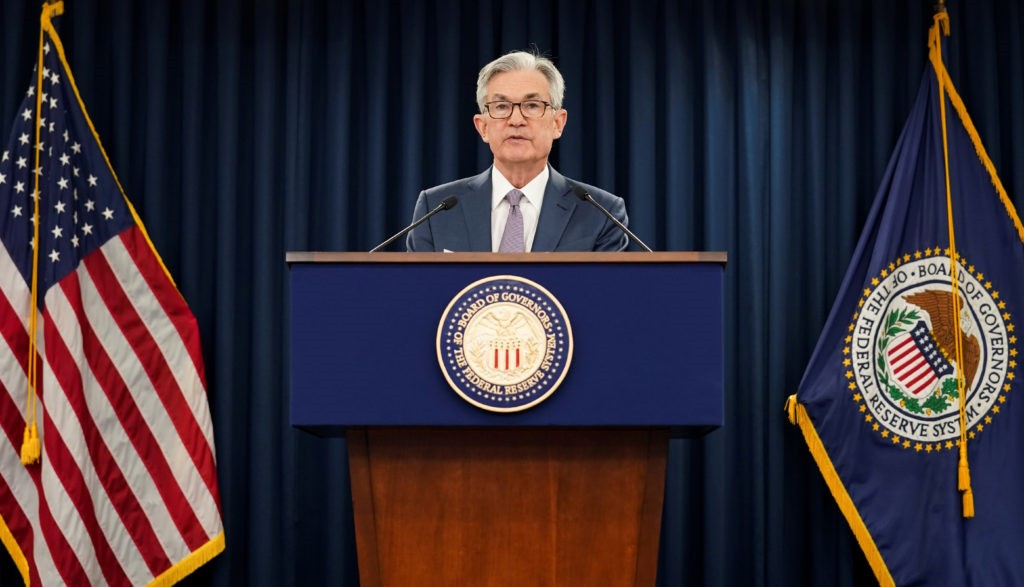
Even though GDP has been strong and inflation has been stronger than expected, the Federal Reserve has not changed its plan to decrease interest rates later this year.
Similar to their December forecasts, the majority of policymakers now anticipate three rate decreases this year. Maintaining a range of 5.25% to 5.5%, the central bank’s benchmark federal-funds rate reached a 23-year high.
Wall Street was absolutely agog over Wednesday’s economic forecasts because traders and investors are dying to see how the Federal Reserve’s inflation forecast for January and February affected the central bank’s outlook. Questions have been raised over the speed with which inflation will return to the Fed’s 2% objective, as stronger price pressures this year have broken a sequence of cooler data in the second part of last year. This has policymakers and investors wondering how quickly this will happen.
Investors had expected the Fed to cut rates three times this year before those predictions and the policy statement were released. The odds of the first cut happening in June were better than even. Prior to that, on April 30-May 1, the Federal Reserve will have one additional meeting.
At a press conference scheduled for 2:30 p.m. Eastern time, Federal Reserve Chair Jerome Powell is expected to respond to inquiries. Recently, he has hinted that the central bank anticipates inflation to keep falling, albeit with some hiccups.
To soothe fears that the Fed may needlessly harm the economy, Powell assured legislators two weeks ago that he believed officials were “not far” from having the confidence necessary to lower rates.
However, he did stress the need of verifying that the recent improvement in inflation rates was not an accident. The six months of solid inflation data we got last year…didn’t turn out to be an accurate signal of where underlying inflation is, Powell said; we don’t want to be in that situation.
All over the economy, the cost of borrowing money is affected by the fed-funds rate. This includes mortgages, credit cards, and business loans. The 30-year fixed-rate mortgage hit a low of 6.7% last week, according to Freddie Mac, after reaching a high of 7.8% in October.
Inflation hit a four-decade high, prompting the Federal Reserve to start raising interest rates two years ago, and they have been raised at the quickest pace in 40 years. Most recently, in July, officials raised rates.
Many analysts and even some Fed officials back then were of the opinion that the Fed’s efforts to lower inflation through raising interest rates would trigger a recession and increased unemployment. As a result of restored supply networks and a rise in the number of people actively seeking employment, wage and price hikes have moderated, but economic growth has remained surprisingly resilient.
Excluding energy and food price fluctuations, the Fed’s favored measure of inflation has dropped from 4.8% a year ago to about 2.8% as of late.
Economic data has not helped settle the dispute over whether the Fed should preemptively reverse any of the increases it made last year, when many were concerned that inflation may stabilize over 3%, since officials last met in January.
A number of Federal Reserve members took a cautious approach when discussing decreasing rates in January, and the recent inflation setback in February and January undid that progress. It has probably strengthened the position of those who believe cuts are unnecessary for this year barring a severe economic downturn.
A 20% increase in the stock market since November and a 20% increase in home prices are increasing wealth and bolstering consumption, particularly among those with high incomes. Exuberant risk-taking is seen in the recent record-breaking price of bitcoin.
On the other hand, there have been conflicting reports regarding consumer spending and hiring surveys. Job growth, as measured by the most popular indicator, has been strong, although previous estimates have been revised downward by historically huge percentages. Unemployment has creeped up from 3.4% in April to 3.9% in February, and wage growth has remained flat.
If the Federal Reserve is worried about keeping interest rates where they are for too long, those numbers could give them more reason to raise rates.
Federal Reserve officials are attempting to negotiate two risks with huge stakes. One is that they let inflation get too entrenched at a level over their 2% target and ease too quickly. The second is that they are overly sluggish, which causes the economy to collapse as a result of rising rates.
Concerned that rising rates are dampening consumer confidence and could cause a recession in the run-up to the November elections, Democrats are understandably anxious. A small group of extremely liberal legislators urged Powell to lower interest rates this week. When making decisions about interest rates, Fed officials insist they don’t take politics into account.
Earlier this month, President Biden expressed his expectation that the Federal Reserve will be able to implement its plans for lower interest rates. Speaking at a campaign event, he made the bold prediction that the interest rate-setting entity would lower rates even further. While he couldn’t provide a guarantee, he was confident in his prediction.


